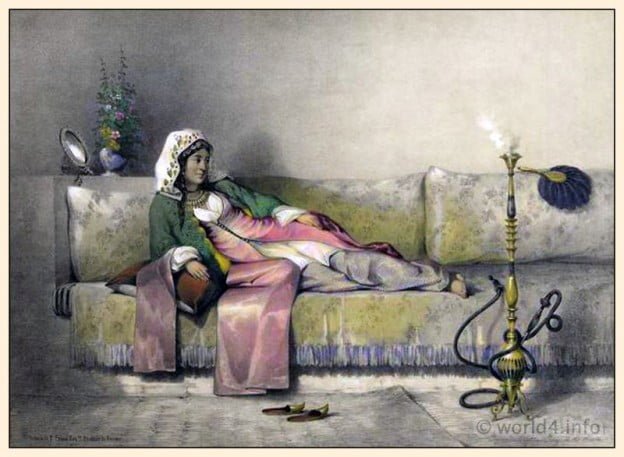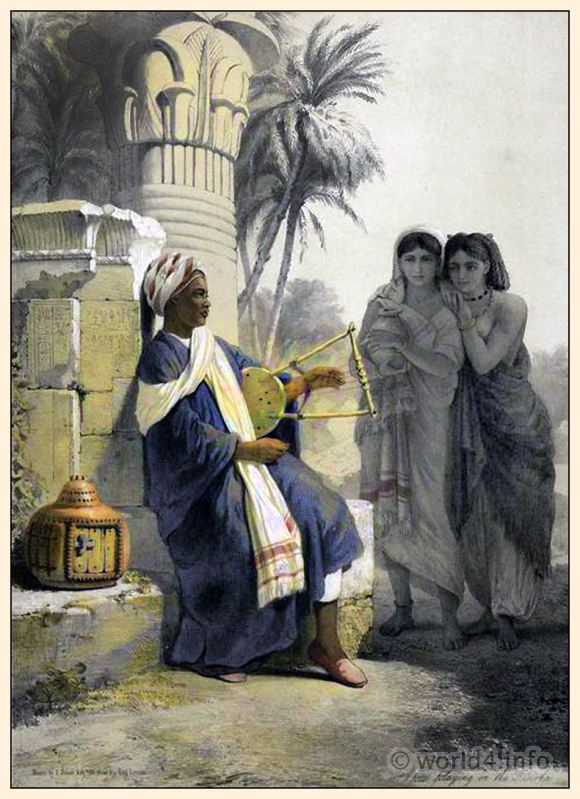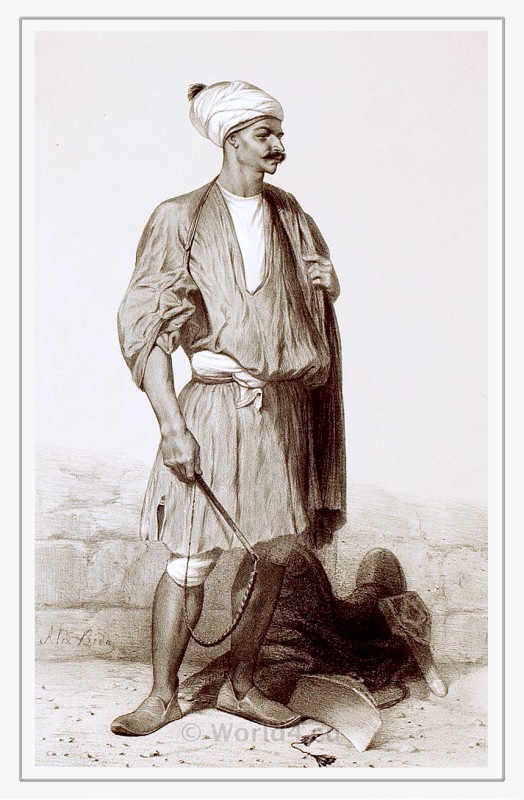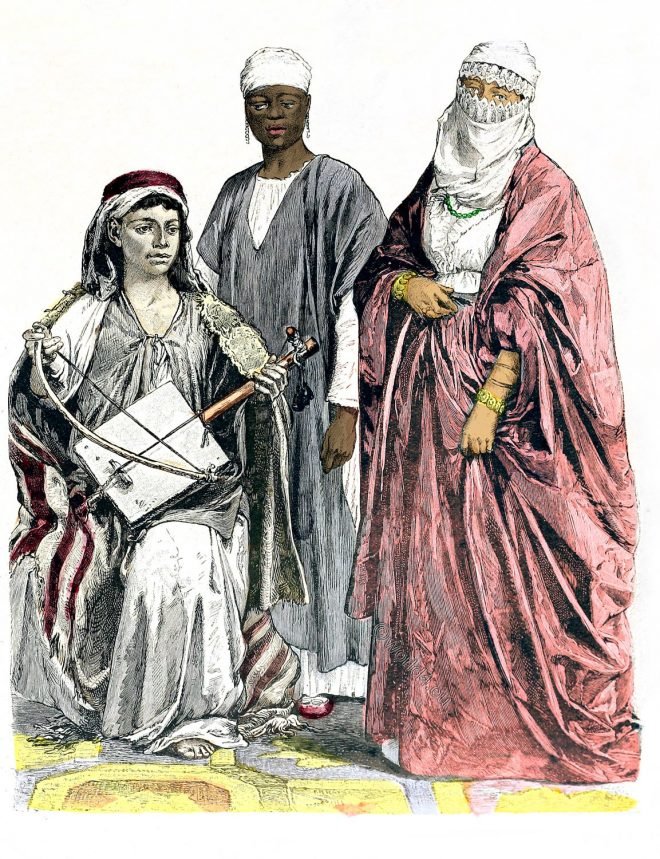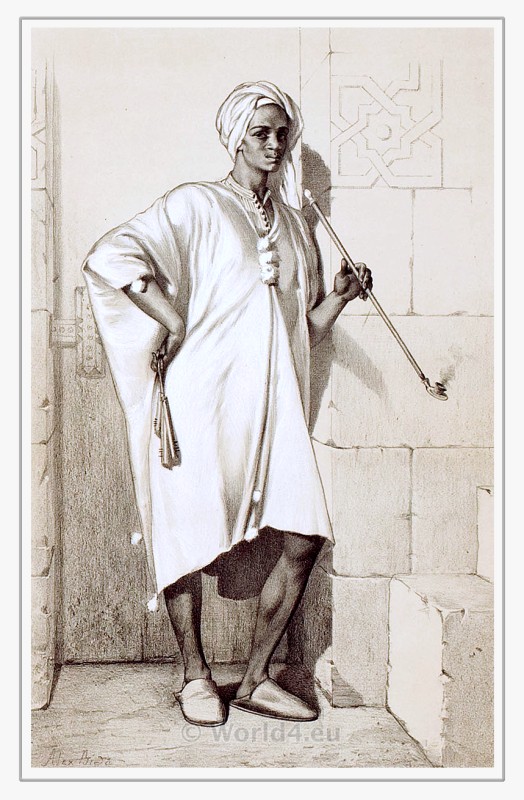Harem girl in Cairo 1848. The Oriental Album by Prisse d’Avennes.
Tag: Arabian customs
Traditional Arabian dress and customs in the Middle East.
A Berber Playing the Kissar to Women of the Same Tribe.
The Oriental Album. A Berber Playing the Kissar to Women of the Same Tribe.
Sais (A Groom of Stable) in 1850. Egyptian costume.
Sais (Palefrenier, A Groom of Stable) from Egypt.
Residents of Port Said with Water Seller. Traditional Egypt clothing.
A woman with a veil and headscarf wearing a precious cloth cord embroidery on the arm, to a light tunic abaya.
Traditional Egypt costumes. Bedouin girl, Fruit Vendor, Runner.
A Bedouin girl in a shirt-like garment, called “mig wal”. Next to her is an Egyptian Fruit Vendor. She wears a cape or cloak, jilbab, Jilaabah called. Her head is covered by a veil, the niqab.
Dress of Tambourine player. Veiled water wearer and Servant in 1850.
Tambourine player in the jilbab. Veiled water wearer in a chador. Servant with a turban, tarboosh, vests, harem pants belted with a wide cloth that Sal Sapik, (SAL û Sapik “pants and shirt”).
Bedouin musician. Nubian slave. Egyptian traditional street clothes.
A young Bedouin with Kufiyya, Jilbab and jacket. Nubian slave girl wearing a caftan over a light of woolen dress. Egyptian woman in street clothing.
Almeh a class of courtesans or female entertainers in Arab Egypt.
Almeh was the name of a class of courtesans or female entertainers in Arab Egypt. The term became synonymous with ‘belly dancer’ in 19th-century European Orientalism.
A Nubian from Egypt smokes a pipe in 1850.
Egypt. Nubian in traditional dress from 1850 smokes a pipe. In the army and in police service, the Nubians played a major role at all times.
Resident from Hejaz, Saudi Arabia c.1850
Hejaz was the starting point of Islam in the 7th century under Muhammad, which expanded over large parts of the Middle East and North Africa

